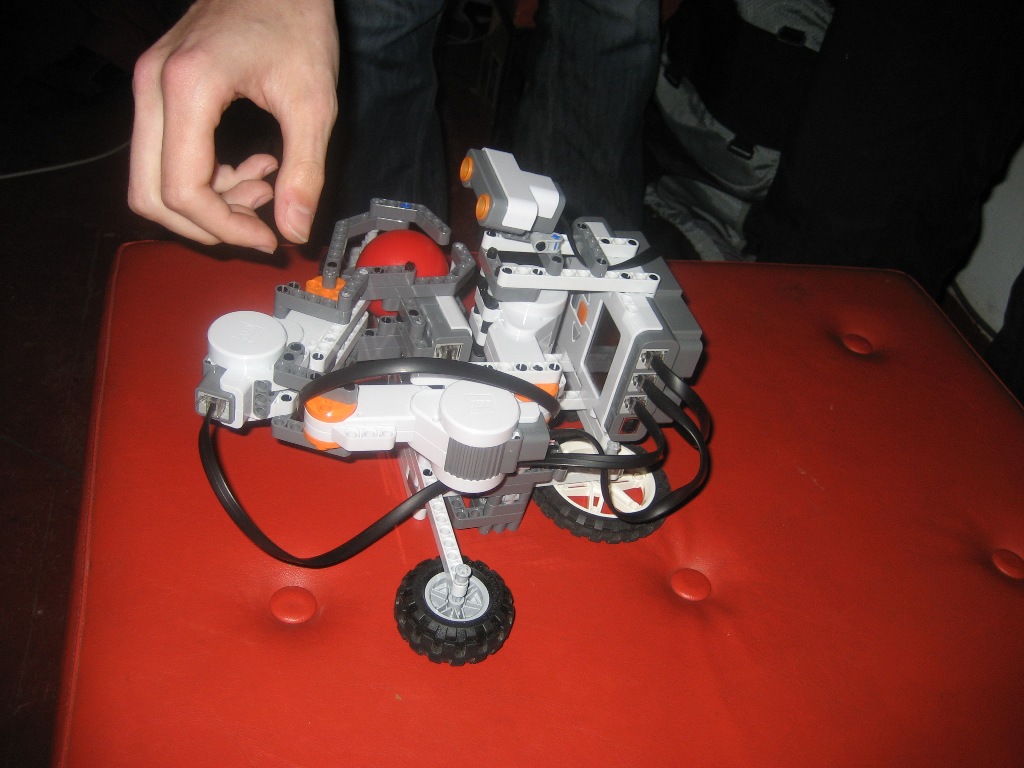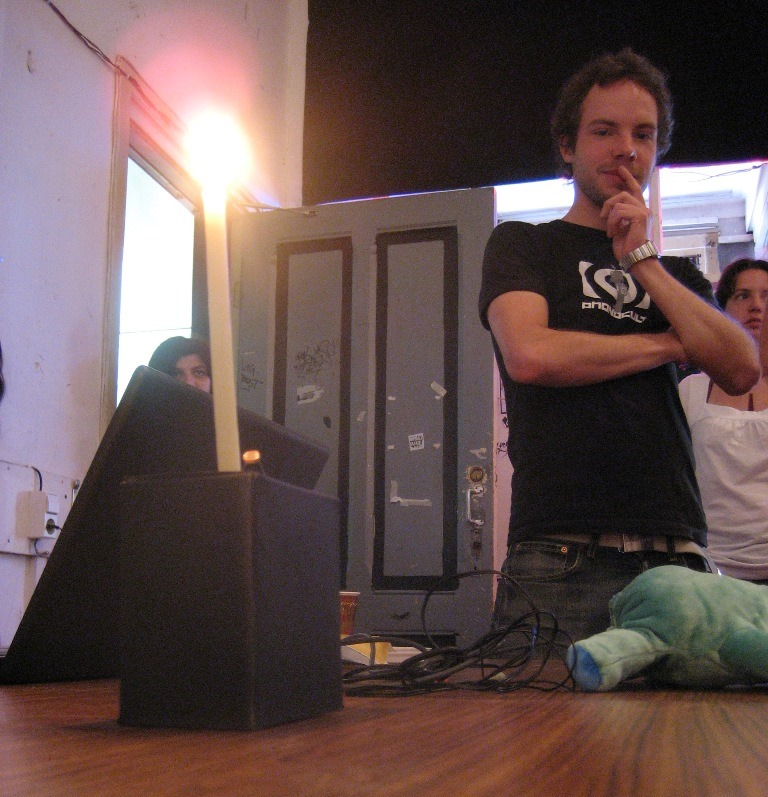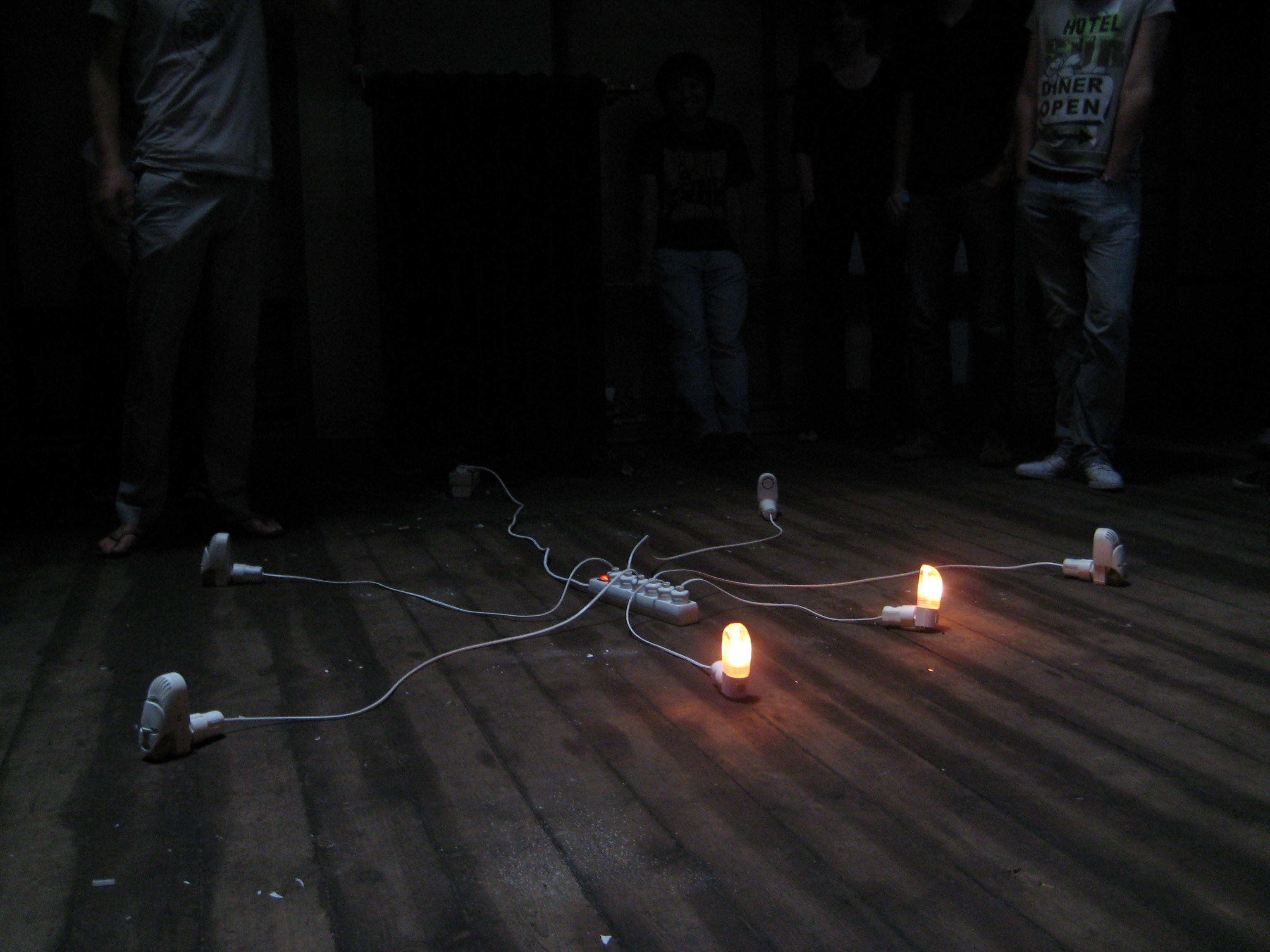Artificial Creatures Workshop
By Peter van der Putten & Maarten H. Lamers
Media Technology MSc program
Leiden University, Institute of Advanced Computer Science (LIACS)
This workshop deals with building artificial creatures, or things that were made to purposefully convey essences of (lifelike) creatures. Together with students we explore and discuss issues such as affect, needs, social interaction, goals, food, etcetera. Hopefully, we can show that for designing artificial creatures, one does not need a degree in advanced- or duck-robotics.
NOTICE: The Artificial Creatures Workshop was offered in 2008. However, in 2020-2021 it was further evolved into the course Artificial Creatures by Peter van der Putten.
Also, Peter and Maarten maintain a small website, Bots Like You, that collects and categorizes robots and unexpected aspects of robotics.
In 1738, French engineer Jacques de Vaucanson built a mechanical duck that was strikingly lifelike. It could move its wings, stand up and sit down, clean itself with its beak, and drink water. But what was most remarkable about it was that it seemed to be able to eat, digest and defecate — using methods, according to De Vaucanson, that were copied from nature.
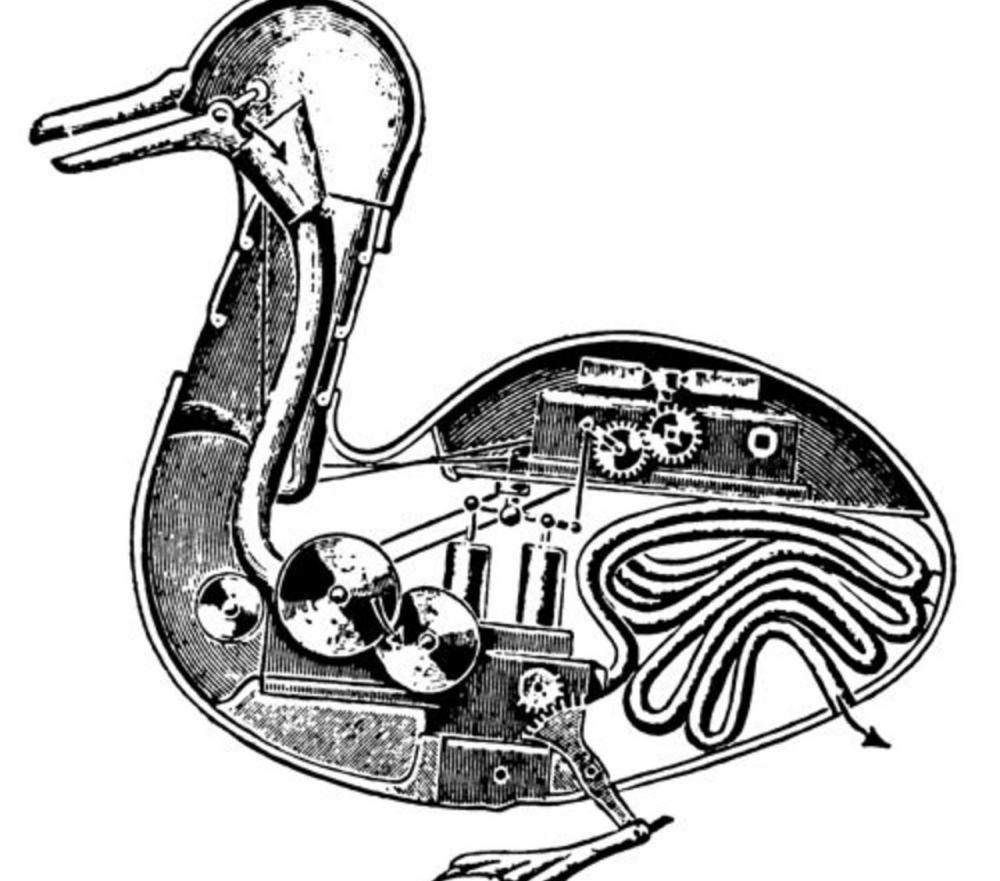
Photo: Schematic drawing of the Canard Digérateur by Jacques de Vaucanson (1738)
When the duck went on display in Paris, people flocked to see it. They wanted to see the duck not only because it was a stunning achievement of clockwork — which, with 30 moving levers and hundreds of interlocking parts, it was — but because they thought it might actually reflect how life worked. Even though they knew the duck wasn't really alive, they thought that you might one day be able really to produce an artificial creature.
This workshop explores what it takes to experience something as a "creature". Besides lectures, class discussions and assignments, homework and a homework test, students must also build an artificial creature. In doing so, they must focus on a single aspect of what makes something a creature. Think "fear", "affection', "hunger", "territory". Besides this single aspect, the creature must be as abstract as possible.
With minimal technical complexity the creature should suggest maximal lifelike properties.
Use of advanced technology is not required. We value an approach that does not rely on technology to achieve "creatureness".
Workshop Details
To successfully complete the workshop, students must prepare by reading scientific texts, attend 2 lecture days, participate in discussions, build an artificial creature (group work), and present it on a designated exhibition day that is open to the general public.
The workshop contains interactive parts; students are strongly suggested to bring their laptops. A reader with several key-articles is provided with the course. There is a maximum of 30 participants for this workshop.
Upon successful completion, the student is awarded 1 EC credit at level 500. With specific permission from the teachers (and only then) students can extend their project after the exhibition day to obtain 1 additional EC credit.
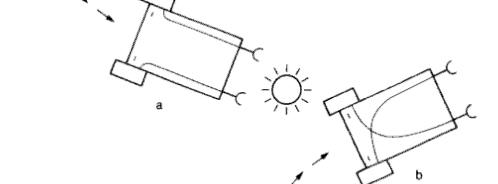
Photo: illustration from Braitenberg's book "Vehicles" (1984)
Workshop Schedule
Friday April 11, 2008
-
Lecture hours: 10h30 - 15h00
Lecture location: Snellius Building, room 413.
Homework: read pp 1-19 of [Braitenberg, 1984].
Friday April 18, 2008
-
Lecture hours: 10h30 - 14h30
Lecture location: Van der Klaauw Laboratory, the small lecture room. This is the old astrophysics observatory in downtown Leiden.
Homework:
-
Read all articles from the reader. There is a homework test-question at the start of the class, so be on time.
If you have anything at home that reminds you of a creature, bring it.
Friday May 9, 2008
-
Creature Presentations: 10h30 - 12h30.
Creatures Exhibition: 13h00 - 17h00, open to the public.
Location: De Illusie, Casuariestraat 16, 2511VB Den Haag.

Photo: Leiden University's Old Observatory
Compulsory Reading
-
Valentino Braitenberg (1984), "Vehicles: Experiments in Synthetic Psychology", MIT Press (read only pp 1-19)
Ian Wilson (1999), "Artificial Emotion: Simulating Mood and Personality", Gamasutra online magazine 3(18)
Frédéric Kaplan (2000), "Free Creatures: The Role of Uselessness in the Design of Artificial Pets", Proceedings of the First Edutainment Robotics Workshop, GMD-AiS, September 2000
Machiko Kusahara (2001), "The Art of Creating Subjective Reality: An Analysis of Japanese Digital Pets", Leonardo 34(4), pp 299-302
Rodney Brooks (2002), "Flesh and Machines: How Robots Will Change Us", Pantheon Publishers (read chapter 2: "The Quest for an Artificial Creature")
Judith Donath (2004), "Artificial pets: simple behaviours elicit complex attachments", in Berkoff, M (ed.) "The Encyclopaedia of Animal Behaviour", Greenwood Press
Hiroshi Ishiguro (2005), "Android Science: Toward a new cross-interdisciplinary framework", CogSci Workshop Toward Social Mechanisms of Android Science, July 2005, Stresa, Italy
ADDENDUM 1: In June 2015, a condensed version of this workshop was offered at The Hague University of Applied Sciences, as part of their HCI Lab Days event (organized a.o. by attendees of the original 2008 workshop at Leiden University :-).
ADDENDUM 2: We also maintain a small website, Bots Like You, on which we collect and categorize robots and unexpected things that people have done with robots.

